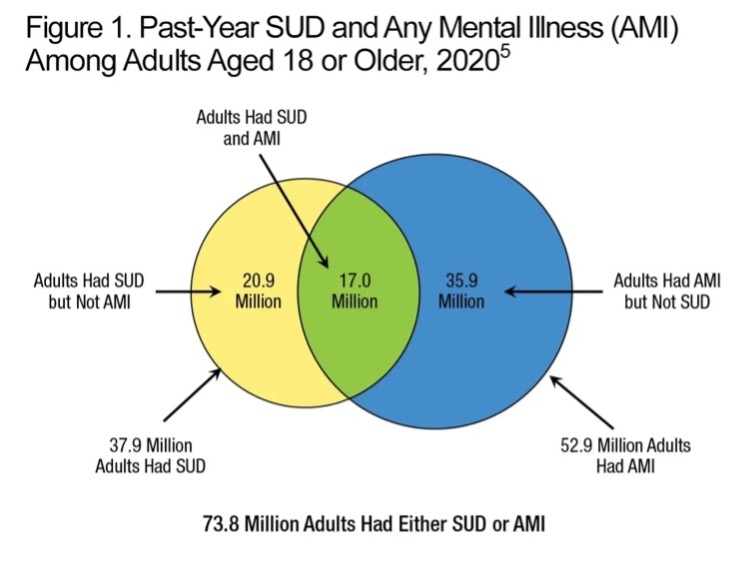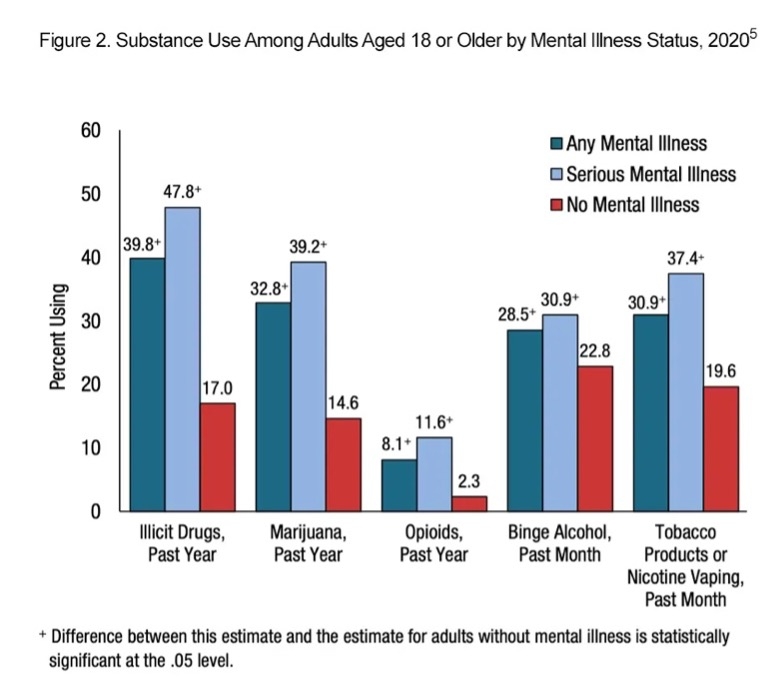Portions of this article were originally published in the Psychiatric Times on March 11, 2022.
August 31 is International Overdose Awareness Day, an annual campaign working to end overdose, remember - without stigma - those who have died, and acknowledge the grief of the family and friends left behind.
The international campaign especially applies to the U.S. because this country is still mired in a devastating, ongoing epidemic of illicit substance misuse and overdose deaths that isn’t getting better.
 The data are staggering and deeply concerning. According to the National Center for Drug Abuse Statistics, “165 million, or 60.2% of Americans aged 12 years or older, currently abuse drugs,” which includes illegal drugs, misusing prescription drugs, and abusing alcohol and tobacco.
The data are staggering and deeply concerning. According to the National Center for Drug Abuse Statistics, “165 million, or 60.2% of Americans aged 12 years or older, currently abuse drugs,” which includes illegal drugs, misusing prescription drugs, and abusing alcohol and tobacco.
The Centers for Disease Control and Prevention’s National Center for Health Statistics shows that the number of overdose deaths has climbed from more than 70,000 in the 12-month period ending in January 2018 to more than 99,000 in the 12-month period ending September 2021. Preliminary reports indicate the number of drug overdose deaths in America increased 30% in 2020. In January 2021, drug overdose deaths exceeded homicides by 307%.
Health professionals can help end this epidemic and heal people by screening their patients for substance use disorder (SUD). The positive implications for screening and treating individuals with SUDs are vast, from preventing HIV and hepatitis in injection-drug users to improving patients’ physical health, mental health, employment, and housing.
Elisa Gumm, DO, Program Director of the University of Arizona College of Medicine – Tucson Department of Psychiatry’s Addiction Medicine Fellowship, stated that “offering addiction interventions at every level reduces the overall costs to the person and society.”
According to the National Institute on Drug Abuse publication, Principles of Drug Addiction Treatment: A Research-Based Guide, “every dollar invested in addiction treatment programs yields a return of between $4 and $7 in reduced drug-related crime, criminal justice costs, and theft. When savings related to health care are included, total savings can exceed costs by a ratio of 12 to 1.”
In addition, there are studies showing that addiction treatment has ripple effects and can even improve the health of family members when the patient with addiction gets treatment.
“Primary care teams should screen for addiction and assist their patients with care,” Gumm said. “When patients receive addiction treatment, comorbidities improve. It is difficult to treat medical conditions when a patient has an active substance use disorder, including nicotine and alcohol. It makes managing numerous diseases difficult and exhausting because there seems to be a hidden factor at play.”
Primary care providers should also consider co-occurring mental health disorders, per the correlation with substance use/abuse.
The Substance Abuse and Mental Health Services Administration (SAMHSA) reports that, of adults aged 18 or older in 2020, 74 million people (29%) had either any mental illness (AMI) or an SUD in the past year; 36 million people (14%) had AMI, but not an SUD; 21 million people (8%) had an SUD, but not AMI; and 17 million people (7%) had both AMI and an SUD." See figure 1.
 The SAMHSA report also shows the percent of adults with mental illnesses and their substance use, as summarized in Figure 2.5
The SAMHSA report also shows the percent of adults with mental illnesses and their substance use, as summarized in Figure 2.5
Gumm recommends primary care providers implement the Screening, Brief Intervention, and Referral to Treatment (SBIRT),6 as SBIRT has “proven successful in screening patients quickly and arming primary care doctors with treatment options when the screen is positive.” She also advises to “be kind to all those involved. Soften the approach to asking patients about addiction.”
To learn more, please review Dr. Gumm’s Psychiatry for Non-Psychiatrists "Screening for Addiction" presentation slide show on this PDF.
References
1. Drug abuse statistics. National Center for Drug Abuse Statistics. February 19, 2022. Accessed February 25, 2022.
2. Vital statistics rapid release provisional drug overdose death counts. Centers for Disease Control and Prevention. February 16, 2022. Accessed February 25, 2022.
3. Is drug addiction worth the cost? National Institute on Drug Abuse. January 2018. Accessed February 25, 2022.
4. Weisner C, Parthasarathy S, Moore C, et al. Individuals receiving addiction treatment: are medical costs of their family members reduced? Addiction. 2010;105(7):1226-1234.
5. Key substance use and mental health indicators in the United States: results from the 2020 National Survey on Drug Use and Health (NSDUH). Substance Abuse and Mental Health Services Administration. Accessed February 25, 2022.
6. Agerwala SM, McCance-Katz EF. Integrating screening, brief intervention, and referral to treatment (SBIRT) into clinical practice settings: a brief review. J Psychoactive Drugs. 2012;44(4):307-317.

